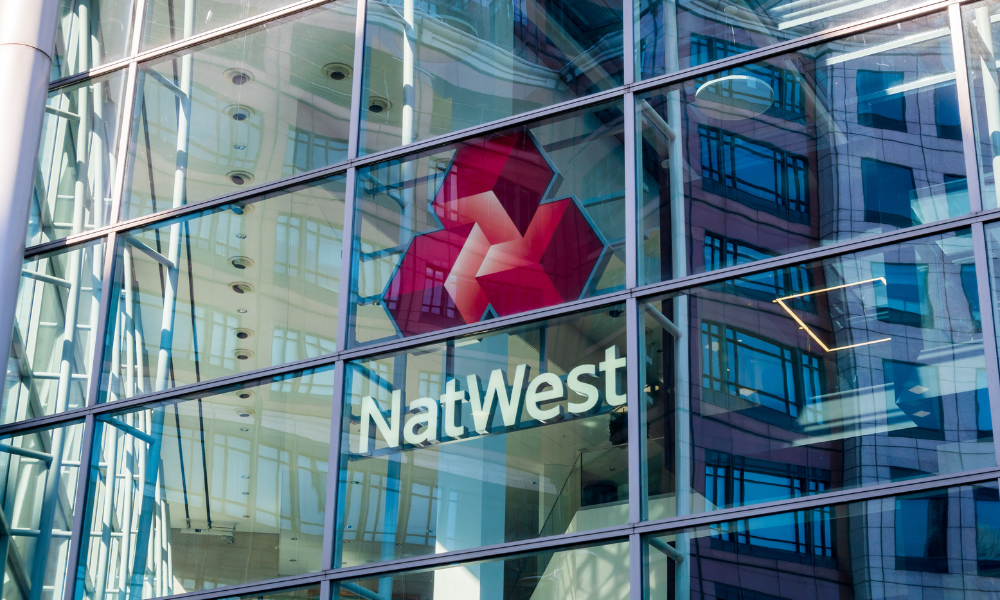Giant mortgage lender boosts honey pot by 25% for last year’s payouts – CEO could get a 50% hike

NatWest Group is preparing to distribute nearly £450 million in bonuses for the previous year as it nears a complete return to private ownership, almost 17 years after being bailed out by the government.
Sources indicate that the bank’s remuneration committee is on the verge of finalising the bonus pool, which is set to be disclosed alongside its annual financial results later this month. The anticipated figure represents a substantial increase of approximately 25% from last year’s £356 million bonus allocation, reflecting an improved financial performance in 2024.
Shares in NatWest, which was once over 80% government-owned, have nearly doubled in value within the past year. The Treasury has been steadily selling off its remaining stake, which now sits below 8%.
According to Sky News, at the current rate of the government’s stock sales, the state will cease to be the bank’s largest shareholder within a matter of weeks. BlackRock, the global asset management firm, currently holds an estimated 6% stake in NatWest and could soon surpass the Treasury as the bank’s top investor.
The shift marks a notable development for NatWest’s leadership, headed by chairman Rick Haythornthwaite. Last October, the bank revised its profit forecast upwards after a 26% increase in third-quarter revenue. As of last Friday’s market close, NatWest shares were priced at 433.1p, giving it a valuation of nearly £35 billion.
Additionally, NatWest has been engaging with institutional investors regarding changes to executive compensation. Lena Wilson, chair of the remuneration committee, has been overseeing discussions on a revised boardroom pay structure, which is set to be voted on at the bank’s upcoming AGM in the spring.
Under the new plan, CEO Paul Thwaite, who initially took over in an interim capacity in July 2023 before securing the position permanently in February, could see his maximum bonus potential rise from 100% of his base salary to 150%. Furthermore, the bank intends to replace his existing restricted share plan with a performance-based share plan, which could potentially increase his total annual compensation to three times his base salary.
If his current salary of just under £1.2 million remains unchanged, Thwaite’s total potential earnings - excluding pensions and other benefits - could rise to £6.6 million from approximately £4.2 million. This adjustment aims to bring his remuneration in line with executives at competitor banks, such as Charlie Nunn at Lloyds Banking Group and CS Venkatakrishnan at Barclays, who may receive up to £14 million annually under a new policy.
Read more: Barclays set to slash CEO’s salary
Thwaite took over from Dame Alison Rose, who resigned following a controversy related to the debanking of Nigel Farage, the Reform Party leader. City investors involved in the discussions have largely supported the proposed compensation adjustments.
During its previous tenure as the Royal Bank of Scotland, the bank regularly faced public backlash over executive pay. Following the government’s £45.5bn bailout during the 2008 financial crisis, the remuneration packages of former RBS leaders Fred Goodwin and Stephen Hester became politically contentious under the administrations of Gordon Brown and David Cameron.
In recent years, the issue has been mitigated by a combination of tighter pay controls and stronger financial results. Despite NatWest’s ongoing recovery, taxpayers are expected to incur significant losses from the bank’s emergency rescue.
A spokesperson for NatWest Group declined to comment to Sky.
The Government’s bailout of NatWest
In the wake of the 2008 financial crisis, the UK government intervened to rescue several financial institutions, including NatWest (which had been bought by RBS in 2000 in a £21 billion deal). The bailout was necessitated by the severe instability in the global banking sector, which saw RBS facing liquidity challenges and significant losses.
As part of the government’s intervention, the Treasury injected £45.5 billion into RBS to prevent its collapse. In return, the government acquired an 84% stake in the bank, effectively nationalising it. The bailout was one of the largest in UK corporate history and was aimed at stabilising the financial system, protecting jobs, and ensuring deposit security for customers.
Following the bailout, the bank underwent significant restructuring, including asset sales, cost-cutting measures, and a rebranding effort that saw it rename itself as NatWest Group in 2020. Over time, as the bank regained financial stability, the government gradually began selling off its shares in NatWest to return it to full private ownership.
Timeline of the Government’s stake sales in NatWest
- 2015: The UK government commenced the process of reducing its stake in NatWest, selling a 5.4% portion of shares for £2.1 billion.
- 2018: A further 7.7% of the bank was sold, generating £2.5 billion for the Treasury.
- 2021: The government offloaded an additional 5% stake, continuing its gradual withdrawal from ownership.
- 2022: In a significant step, the government reduced its holding to below 50%, meaning NatWest was no longer under majority state control.
- 2023: Sales accelerated, with the government’s stake falling to around 38% by the end of the year.
- 2024: Continued sell-offs saw the stake drop below 10% as NatWest’s financial performance strengthened.
- 2025: The Treasury is expected to complete the sale of its remaining stake, fully returning NatWest to private ownership.
The gradual exit of the government from NatWest reflects the bank’s recovery and the broader strategy to reduce taxpayer involvement in commercial banking. However, taxpayers are set to incur a loss from the bailout, as the share sales have generated significantly less than the original £45.5 billion investment.



